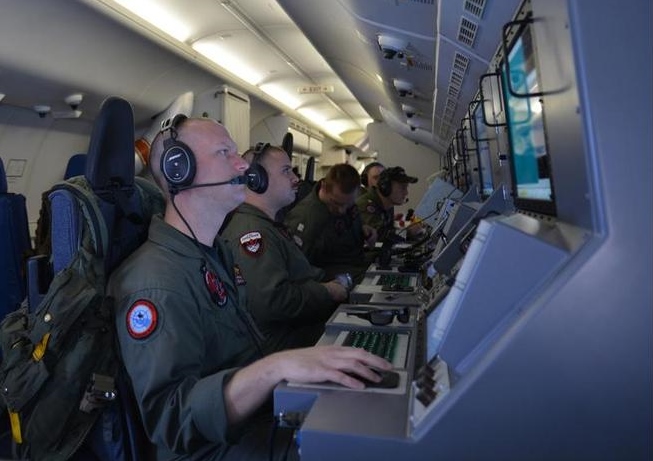
The New Straits Times in Kuala Lumpur reported that investigators are further asking if the aircraft stuck to a more high-traffic commercial route over the Bay of Bengal in order to avoid the suspicion of those manning military radars.
"To them, MH370 would appear to be just another commercial aircraft on its way to its destination," the Malaysian paper wrote.
"The person who had control over the aircraft has a solid knowledge of avionics and navigation, and left a clean track. It passed low over Kelantan [in Malaysia], that was true," an unnamed official told the New Straits Times. "It's possible that the aircraft had hugged the terrain in some areas that are mountainous to avoid radar detection."
"This technique is called terrain masking and is used by military pilots to fly to their targets stealthily, using the topography to mask their approach from prying microwaves," the Malaysian news outlet wrote. "This type of flying is considered very dangerous, especially in low-light conditions and spatial disorientation, and airsickness could easily set in. The stresses and loads it puts on the airframe, especially an airliner of the 777′s size, are tremendous."
Earlier reports quoting investigators had the plane flying an additional seven hours after turning back from its intended path toward Beijing.
Investigators believe MH370 would have flown over two countries besides Malaysia "although it's not clear which ones," the Sydney Morning Herald wrote.
According to the "terrain masking" theory, the aircraft would have burned fuel at a much faster rate had it been flying low for long. The Malaysian paper reported that pilots suggested the plane would thus have lost two hours of flying time and could have lost even more reserves with "erratic maneuvers."
Additionally, Malaysia Airlines CEO Ahmad Jauhari Yahya told reporters on Monday that the last words spoken from the cockpit were believed to have been spoken by the co-pilot.
"Initial investigations indicate it was the co-pilot who basically spoke," Yahya told a news conference in Kuala Lumpur.
"All right, good night" was the last message from the cockpit, which reportedly was said around the time that two of the plane's signaling systems were turned off. That's raising questions, among which are: Why would the co-pilot would signal everything was fine if the transponders were turned off?
Fariq Abdul Hamid was the first officer on the flight. He and the captain are currently of primary focus to investigators who would like to know who was at the controls when the plane disappeared.
"The last signal from the Aircraft Communications Addressing and Reporting System (ACARS) was received 12 minutes before the co-pilot's seemingly nonchalant final words," the French News Agency AFP reported.
Based on flight data collected by satellite, Prime Minister Datuk Seri Najib Razak said the plane would have flown on one of two possible routes, a northern corridor spanning the border of Kazakhstan and Turkmenistan to northern Thailand or a southern corridor covering Indonesia to the southern Indian Ocean.
The New Straits Times quoted unnamed sources close to the investigation who said officials are also looking at which airports along those routes - that are not frequently used - have long runways able to accommodate a Boeing 777.
The paper quoted "another highly-placed source" who said that the initial forensics on Captain Zaharie Ahmad Shah's home flight simulator showed that it was "clean": however, further probes are being conducted.



Reader Comments
This is all supposition, truth is IMHO the PTB have no clue what happened to the flight, the truth may be far stranger than fiction.